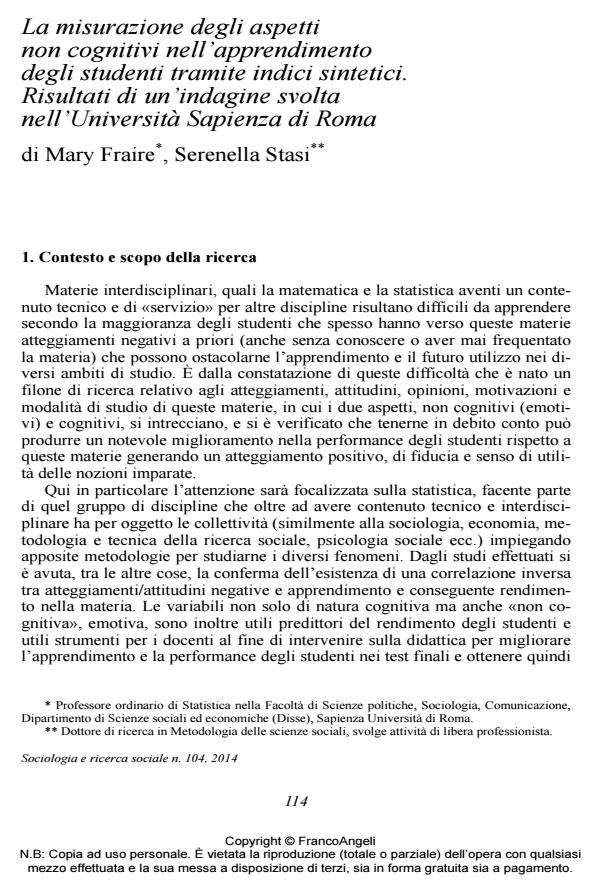Assessment of Students’ Non Cognitive Factors in Learning by Index
Journal title SOCIOLOGIA E RICERCA SOCIALE
Author/s Mary Fraire, Serenella Stasi
Publishing Year 2014 Issue 2014/104
Language Italian Pages 32 P. 114-145 File size 214 KB
DOI 10.3280/SR2014-104006
DOI is like a bar code for intellectual property: to have more infomation
click here
Below, you can see the article first page
If you want to buy this article in PDF format, you can do it, following the instructions to buy download credits

FrancoAngeli is member of Publishers International Linking Association, Inc (PILA), a not-for-profit association which run the CrossRef service enabling links to and from online scholarly content.
After a brief introduction on the evolution of measuring instruments for cognitive and non-cognitive factors in students’ learning , the 28-item Survey Attitudes Towards Statistics (SATS ) scale is applied on a sample of 135 students attending introductory statistics in the Sociology and Social Service courses at «Sapienza» University of Rome. In the survey two different 28-item format responses have been compared: five-point and 0-5 cm. segment. Both sets of data have been analysed and compared by Principal Component Analysis. The factorial structure resulting suggests that the components are not clearly separated; therefore a different composite indicator (index) is suggested, instead of the classic indexes based on the single factor solutions. The new index shows the multidimensionality of the phenomenon, has different requisites, a simplified measurement and interpretation, and reliability coefficient theta is 100%.
Mary Fraire, Serenella Stasi, La misurazione degli aspetti non cognitivi nell’apprendimento degli studenti tramite indici sintetici. Risultati di un’indagine svolta nell’Università Sapienza di Roma in "SOCIOLOGIA E RICERCA SOCIALE " 104/2014, pp 114-145, DOI: 10.3280/SR2014-104006